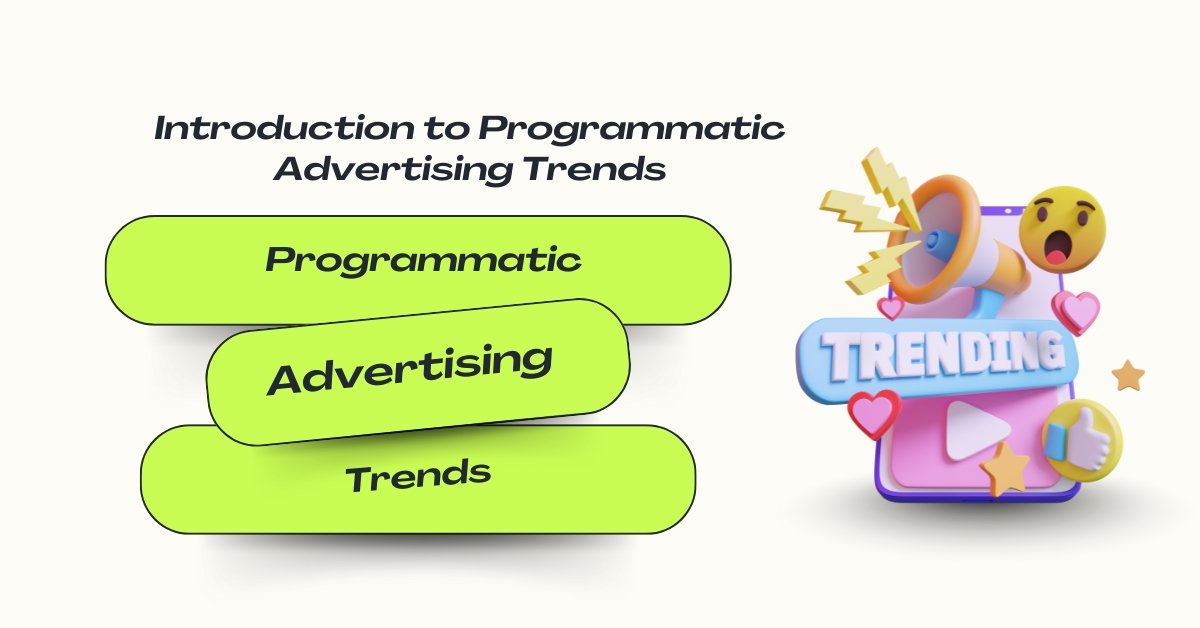
Introduction to Programmatic Advertising Trends
Programmatic advertising is transforming how brands buy and place ads online. Instead of manual negotiations, it uses AI and real-time bidding to target the right audience at the perfect moment. In 2025, the focus is on smarter automation, privacy-first strategies, and emerging channels like Connected TV and programmatic audio.
Marketers are leveraging first-party data and machine learning to deliver personalized ads that drive higher engagement. For example, a streaming platform can now show tailored ads based on viewing habits instantly. These trends are making ad campaigns faster, more efficient, and more relevant than ever before.
Why is it essential to understand Programmatic Advertising Trends?
- Stay Ahead of Competition
- Programmatic Advertising Trends help businesses predict market shifts and consumer behavior.
- Brands that adapt quickly to these trends gain a more potent edge over competitors still relying on outdated ad methods.
- Maximize Ad Spend Efficiency
- By following Programmatic Advertising Trends, marketers can optimize bidding strategies, reduce wasted impressions, and improve ROI.
- Real-time data ensures campaigns reach the right audience at the right moment, minimizing budget leaks.
- Improve Audience Targeting
- Understanding Programmatic Advertising Trends allows for precise audience segmentation.
- From demographics to user intent, businesses can craft campaigns that resonate with highly targeted groups.
- Leverage Emerging Technologies
- New Programmatic Advertising Trends often highlight innovations like AI-driven targeting, contextual ads, and connected TV.
- Keeping up ensures brands don’t miss opportunities to engage customers on modern platforms.
- Build Long-Term Growth
- Tracking Programmatic Advertising Trends ensures sustainable strategies rather than short-term fixes.
- Businesses that adapt consistently position themselves as forward-thinking, trusted players in the digital space.
9 Programmatic Advertising Trends in 2025
Programmatic advertising is evolving fast, and 2025 is shaping up to be a year of big changes. Automation, AI, privacy-first strategies, and new ad formats are reshaping how brands connect with audiences. Here’s a deep dive into the nine biggest programmatic advertising trends to watch this year.
1. AI-Driven Campaign Optimization
Artificial intelligence is no longer just a buzzword in advertising; it’s the backbone of smart campaigns. In 2025, AI tools can predict user behavior, identify high-value audiences, and optimize ad bids in real time. It means fewer wasted impressions and better ROI. Brands are using AI to automatically adjust creatives, ensuring every ad feels relevant to the viewer.
Quick takeaway: AI turns raw data into precise targeting and better conversions.
2. Growth of Connected TV (CTV) Programmatic Ads
Streaming platforms have taken over living rooms, and advertisers are following. CTV programmatic ads allow brands to target viewers on services like Netflix, Hulu, and other OTT platforms with TV-quality storytelling. What’s different now is the data-driven targeting behind it. Advertisers can serve different ads to different households watching the same show, based on their interests and behaviors.
Quick takeaway: CTV blends TV-scale impact with digital precision.
3. Privacy-First Targeting Strategies
With the end of third-party cookies, advertisers are rethinking targeting methods. In 2025, privacy-first programmatic advertising focuses on first-party and zero-party data collected directly from users. Contextual targeting is also back in the spotlight, placing ads based on the content being consumed rather than tracking individuals.
Quick takeaway: Respecting privacy is now essential for building trust and compliance.
4. Real-Time Personalization at Scale
Dynamic Creative Optimization (DCO) is making personalization faster and more relevant than ever. Programmatic platforms can now adjust headlines, images, and CTAs instantly based on location, time of day, weather, or user behavior. For example, a coffee brand could show a hot latte ad in cold weather and an iced coffee ad when temperatures rise automatically.
Quick takeaway: Personalization drives engagement when it happens in the moment.
5. Contextual Targeting 2.0
It isn’t the old keyword-based targeting AI and natural language processing power. Advertisers can now understand the tone, sentiment, and deeper meaning of content before placing an ad. It ensures ads appear in the right context while keeping brand safety in check.
Quick takeaway: Smarter context matching improves relevance without invading privacy.
6. Programmatic Audio Advertising
Podcasts, music streaming apps, and voice assistants are becoming prime channels for programmatic ads. Brands can target listeners based on demographics, listening habits, or even mood categories. With earbuds in and distractions low, audio ads often feel more personal and engaging.
Quick takeaway: Audio offers an intimate, distraction-free ad environment.
7. Blockchain for Ad Transparency
Fraud remains a challenge in programmatic advertising. Blockchain technology is emerging as a way to track every step of the ad buying process. It helps verify impressions, ensure fair pricing, and create transparency between advertisers and publishers. In 2025, expect more brands to adopt blockchain to protect ad budgets.
Quick takeaway: Blockchain builds trust by making ad transactions transparent.
8. Augmented Reality (AR) and Virtual Reality (VR) Ads
Immersive advertising is leaping forward. With programmatic buying, brands can place interactive AR filters or VR experiences into users’ digital environments instantly. Imagine trying on a pair of sunglasses virtually within an ad or exploring a virtual store, all without leaving your app or browser.
Quick takeaway: Immersive formats turn ads into experiences.
9. Programmatic Out-of-Home (OOH) Advertising
Digital billboards and transit ads are now smarter than ever. Programmatic OOH allows advertisers to change messages in real time based on weather, events, or traffic conditions. A sports brand might display a congratulatory message right after a local team’s win, creating timely, relevant engagement.
Quick takeaway: Programmatic OOH combines real-world reach with digital flexibility.
Final Thoughts
Programmatic advertising in 2025 is all about precision, personalization, and privacy. Brands that embrace AI, explore new formats like CTV and AR, and respect consumer data will see stronger engagement and better returns.
Emerging Technologies Influencing Programmatic Advertising
- AI-Powered Predictive Analytics: Artificial intelligence is taking programmatic advertising to the next level. By analyzing massive datasets in real time, AI predicts which ads will perform best for specific audiences. Brands use this to optimize bids, choose ad placements, and improve conversion rates without human guesswork.
- Machine Learning for Creative Optimization: Machine learning algorithms now adjust ad creatives based on live performance data. If a certain headline or image works better, the system prioritizes it instantly. It keeps campaigns fresh and relevant without constant manual updates.
- Blockchain for Ad Transparency: Blockchain technology is solving long-standing issues of fraud and trust in digital advertising. It creates a secure and transparent record of every transaction in the ad supply chain. It means advertisers can verify exactly where their budget is going.
- 5G Connectivity Boosting Ad Delivery: The expansion of 5G networks allows faster, richer ad experiences. High-quality video, AR, and interactive ads load instantly, even on mobile devices. It helps programmatic campaigns deliver more engaging formats without lag.
- Augmented Reality (AR) Ads: AR is adding interactive layers to programmatic campaigns. Shoppers can try products virtually through their phone cameras before making a purchase. It increases engagement and drives higher intent-to-buy.
- Virtual Reality (VR) Advertising: VR spaces like gaming worlds and metaverse platforms are opening new inventory for programmatic buys. Brands can place immersive ads where users are most engaged, creating memorable brand experiences.
- Programmatic Digital Out-of-Home (DOOH): Digital billboards and outdoor screens now use programmatic tech to display targeted ads in real time. For example, a coffee brand can trigger an ad near train stations during morning rush hours.
- Voice-Activated Programmatic Ads: With smart speakers and voice assistants growing in popularity, programmatic audio ads can now respond to voice prompts. It opens a direct interaction channel between brands and consumers.
- Advanced Contextual Targeting: AI-driven contextual analysis goes beyond keywords. It understands the tone, sentiment, and visual content of a webpage before placing an ad. IT ensures the ad appears in a context that feels natural and relevant to the audience.
Challenges and Opportunities in Programmatic Advertising
Key Challenges in Programmatic Advertising
- Ad Fraud and Invalid Traffic: Fake impressions, bot traffic, and click fraud cost advertisers billions each year. Without robust verification tools, brands risk wasting ad spend on non-human audiences.
- Brand Safety Risks: Ads can sometimes appear alongside inappropriate or irrelevant content. It not only harms brand image but also reduces trust among consumers.
- Privacy Regulations and Cookie Deprecation: Data privacy laws and the phase-out of third-party cookies make audience targeting more complex. Advertisers must adapt to privacy-first strategies while still maintaining precision.
- Measurement and Attribution Complexity: Multi-device user journeys make it harder to measure true campaign performance. Without clear attribution models, ROI tracking becomes challenging.
- Rising Costs of Premium Inventory: As more brands compete for high-quality ad placements, costs rise. Smaller advertisers often struggle to match the bidding power of larger competitors.
Key Opportunities in Programmatic Advertising
- AI and Machine Learning Optimization: AI-powered algorithms can predict user behavior, optimize bids in real time, and increase conversion rates. Brands using these tools can achieve better efficiency and targeting.
- Growth of Connected TV and Programmatic Video: Streaming platforms offer premium ad space with precise targeting. As more users shift to CTV, brands can tap into high-engagement audiences.
- First-Party Data Utilization: With privacy changes, first-party data from CRM systems, loyalty programs, and website interactions becomes a goldmine for accurate targeting.
- Dynamic Creative Optimization (DCO): Real-time ad customization allows brands to deliver personalized content based on user context, increasing engagement and conversions.
- Emerging Channels Like Programmatic Audio and Digital OOH: Podcasts, music streaming, and smart billboards create fresh opportunities for storytelling and brand visibility.
- Blockchain for Transparency: Using blockchain can ensure ad delivery accountability, reduce fraud, and improve trust in the ad supply chain.
Future Outlook for Programmatic Advertising
The future of programmatic advertising looks dynamic, with rapid shifts driven by technology and consumer behavior. AI-powered programmatic advertising will dominate, using predictive algorithms to optimize campaigns in real time. As privacy laws tighten, brands will lean on first-party data strategies to maintain targeting accuracy without violating regulations.
Connected TV programmatic ads are expected to see double-digit growth as streaming becomes the default for entertainment. Similarly, programmatic audio will expand with podcasts and music platforms integrating smarter ad placements. Blockchain adoption could bring transparency, reducing fraud and boosting trust between advertisers and publishers.
Marketers who embrace real-time personalization will stand out, delivering content that adapts instantly to audience intent. With more devices and channels coming online, the programmatic landscape will be more fragmented yet richer with opportunities. Those investing early in innovation will lead the next phase of data-driven advertising.



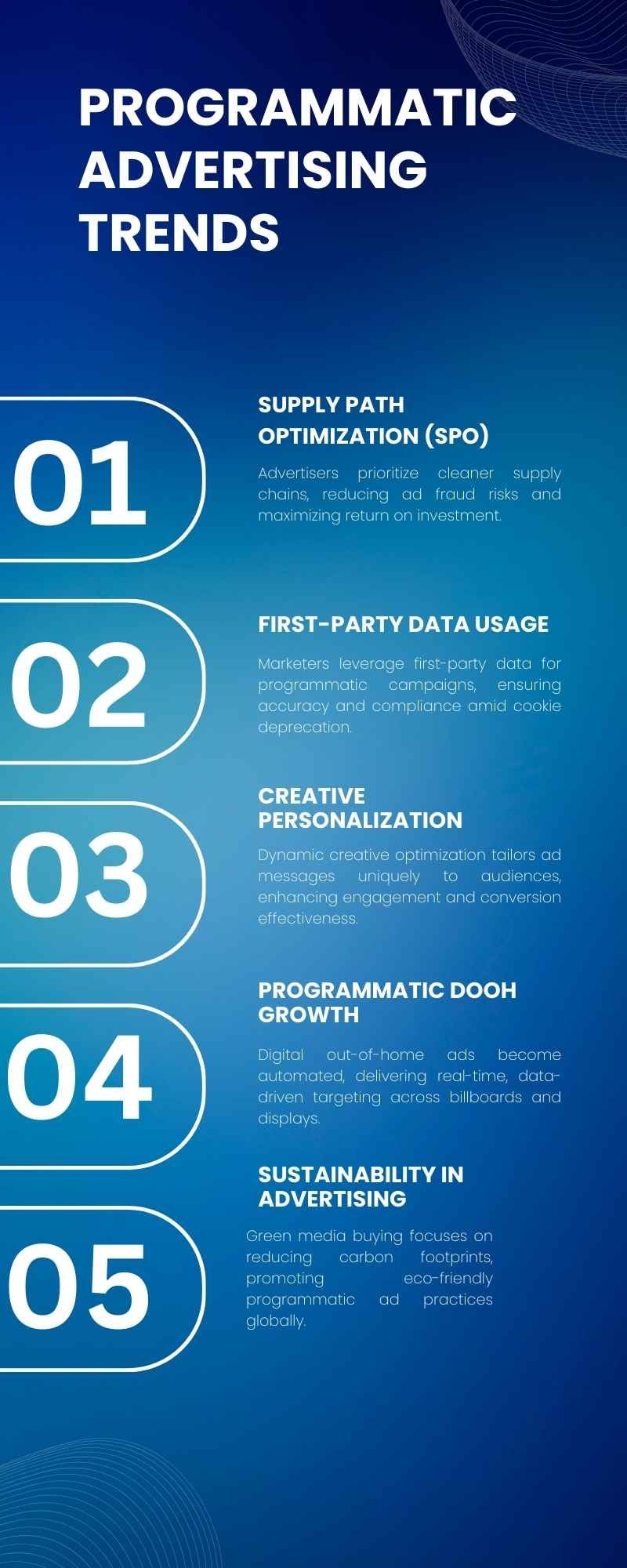
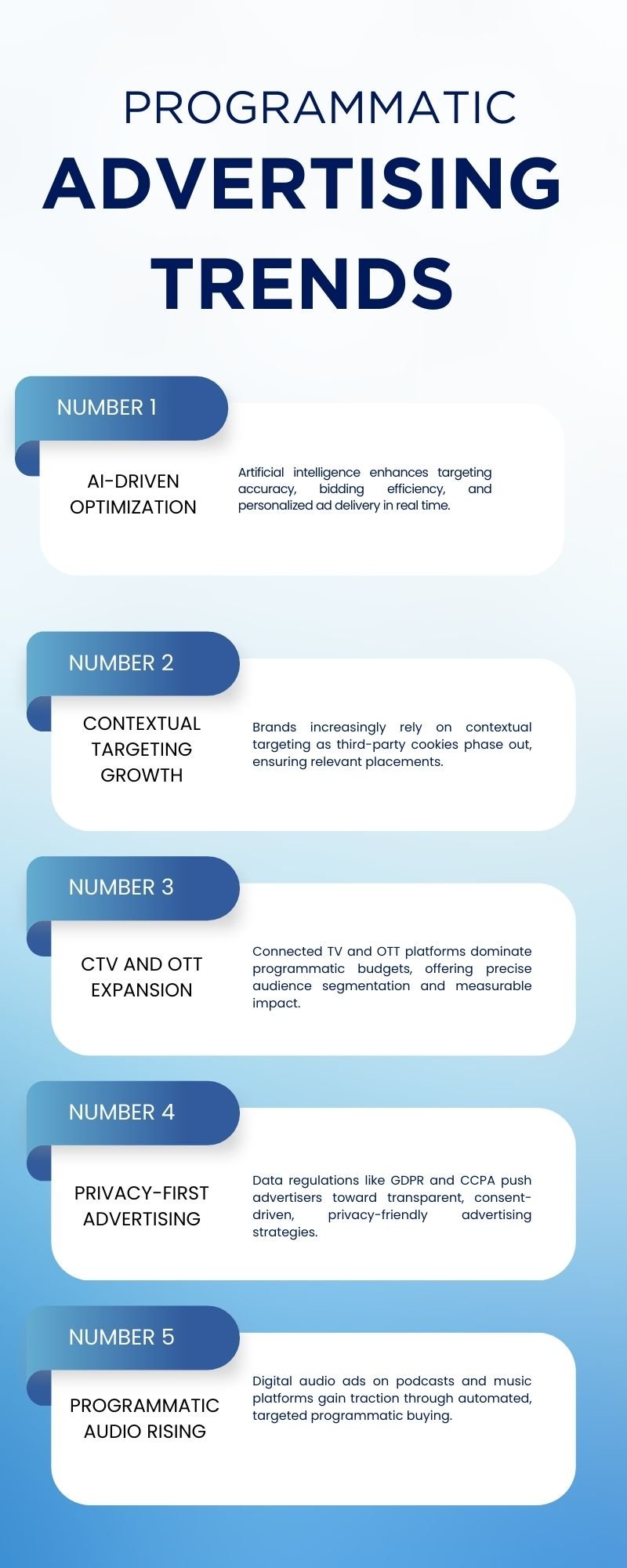
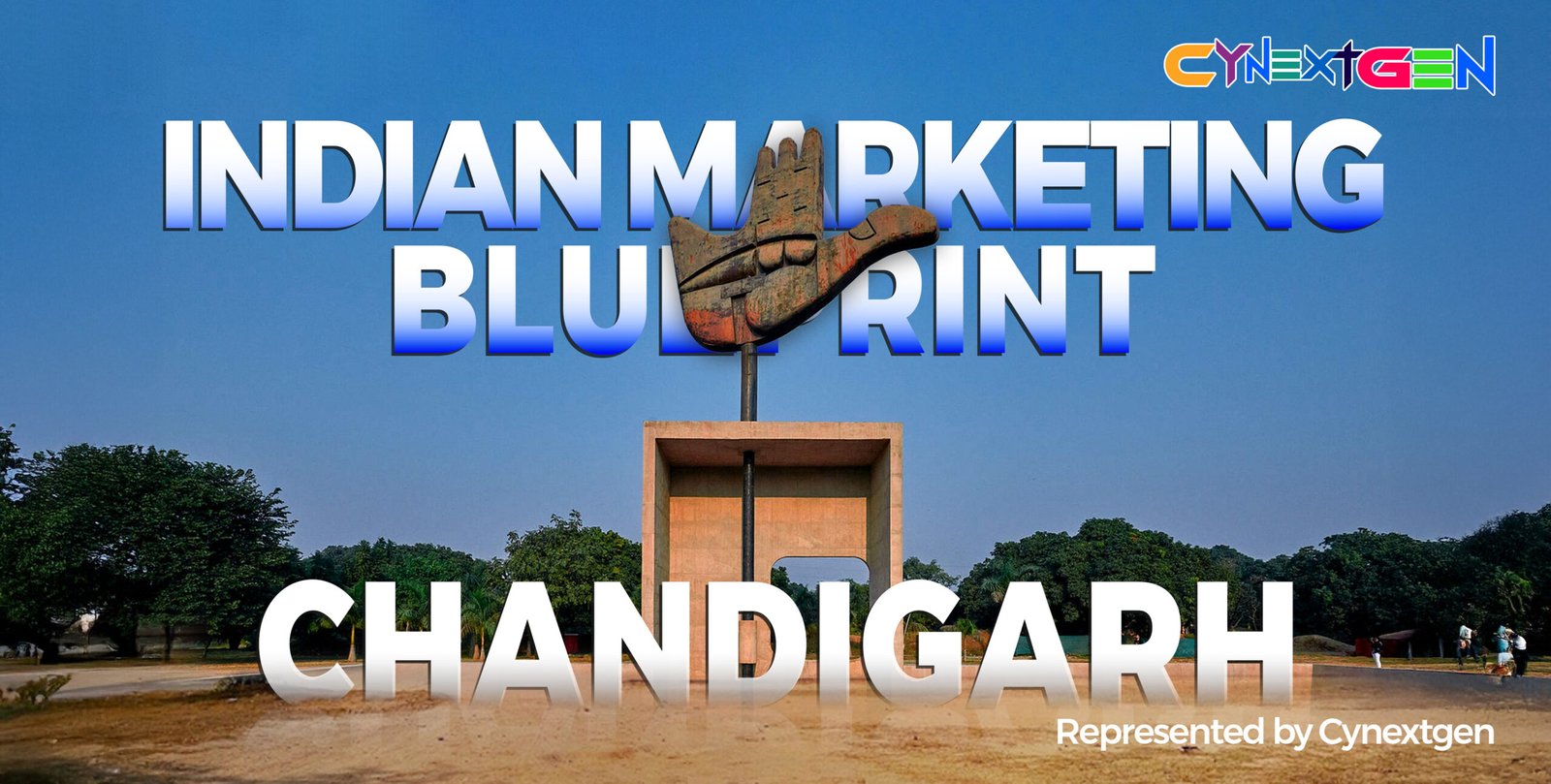
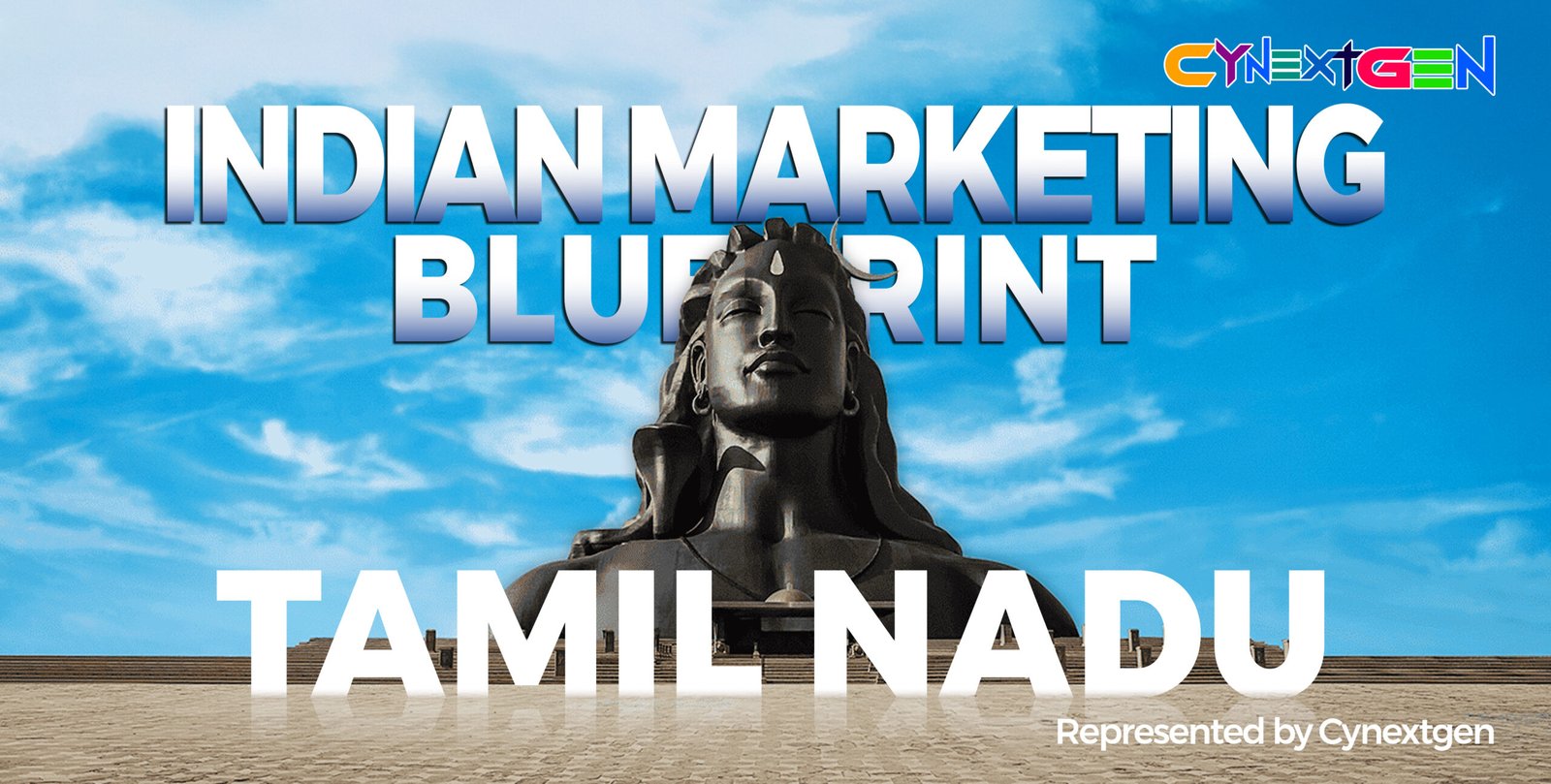
Add Comment